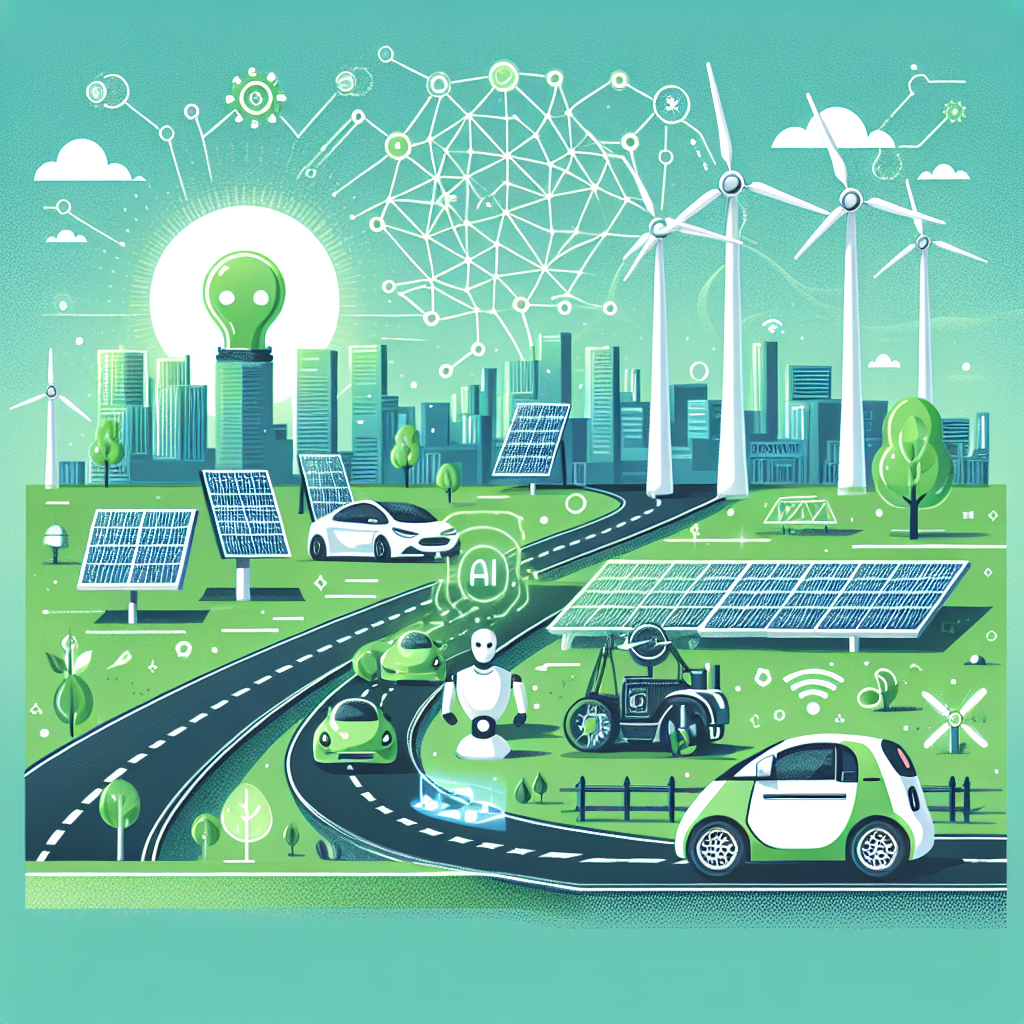AI and Sustainable Transportation: The Road Ahead
Introduction
Artificial Intelligence (AI) has become a game-changer in the transportation industry, revolutionizing the way people and goods are moved from one place to another. With the increasing focus on sustainability and the need to reduce carbon emissions, AI has emerged as a key technology in driving the transition towards more sustainable transportation systems.
In this article, we will explore the role of AI in sustainable transportation and discuss the various ways in which AI is being used to improve the efficiency, safety, and environmental impact of transportation systems. We will also look at some of the challenges and opportunities that lie ahead as we continue to integrate AI into our transportation infrastructure.
The Role of AI in Sustainable Transportation
AI has the potential to transform the transportation industry in a number of ways, making it more efficient, safer, and more environmentally friendly. Some of the key ways in which AI is being used in sustainable transportation include:
1. Traffic Management: AI-powered traffic management systems can help optimize traffic flow, reduce congestion, and minimize emissions by dynamically adjusting traffic signals, rerouting vehicles, and providing real-time traffic information to drivers.
2. Autonomous Vehicles: AI is at the heart of autonomous vehicle technology, allowing vehicles to navigate roads, avoid obstacles, and make decisions in real-time without human intervention. Autonomous vehicles have the potential to reduce accidents, improve traffic flow, and reduce emissions by optimizing driving patterns.
3. Electric Vehicles: AI can be used to optimize the charging and usage of electric vehicles, ensuring that they are charged when electricity is cheapest and cleanest. AI can also help predict battery degradation and optimize driving patterns to maximize range and efficiency.
4. Ride-Sharing and Mobility-as-a-Service: AI-powered ride-sharing and mobility-as-a-service platforms can optimize routes, match passengers with drivers, and reduce empty miles, leading to fewer vehicles on the road and lower emissions.
5. Predictive Maintenance: AI can be used to predict when vehicles and infrastructure are likely to fail, allowing for proactive maintenance and reducing downtime and emissions.
Challenges and Opportunities
While AI holds great promise for sustainable transportation, there are also challenges that need to be addressed in order to fully realize its potential. Some of the key challenges and opportunities include:
1. Data Privacy and Security: AI relies on vast amounts of data to make decisions, raising concerns about data privacy and security. Ensuring that data is collected, stored, and used responsibly is a key challenge for the transportation industry.
2. Regulation and Policy: As AI becomes more integrated into transportation systems, there is a need for clear regulations and policies to govern its use. Ensuring that AI is used ethically and safely will be essential in building public trust in the technology.
3. Equity and Accessibility: AI has the potential to improve transportation access for underserved communities, but there is also a risk that it could exacerbate existing inequalities. Ensuring that AI is used in a way that benefits all members of society will be crucial in building a sustainable transportation system.
4. Technical Challenges: Developing AI-powered transportation systems is a complex and challenging task, requiring expertise in a wide range of technical disciplines. Overcoming technical hurdles such as sensor fusion, decision-making algorithms, and system integration will be key to the success of AI in sustainable transportation.
5. Collaboration and Partnerships: Building a sustainable transportation system will require collaboration and partnerships between governments, industry, and academia. Working together to share data, expertise, and resources will be essential in driving innovation and achieving our sustainability goals.
FAQs
Q: How is AI being used in traffic management?
A: AI is being used in traffic management to optimize traffic flow, reduce congestion, and minimize emissions by dynamically adjusting traffic signals, rerouting vehicles, and providing real-time traffic information to drivers.
Q: What are some of the benefits of autonomous vehicles?
A: Autonomous vehicles have the potential to reduce accidents, improve traffic flow, and reduce emissions by optimizing driving patterns and avoiding obstacles in real-time without human intervention.
Q: How can AI help optimize the charging and usage of electric vehicles?
A: AI can help optimize the charging and usage of electric vehicles by ensuring that they are charged when electricity is cheapest and cleanest, predicting battery degradation, and optimizing driving patterns to maximize range and efficiency.
Q: What are some of the challenges in integrating AI into transportation systems?
A: Some of the key challenges in integrating AI into transportation systems include data privacy and security concerns, regulation and policy issues, equity and accessibility considerations, technical hurdles, and the need for collaboration and partnerships.
Q: How can AI be used to improve transportation access for underserved communities?
A: AI has the potential to improve transportation access for underserved communities by optimizing routes, reducing costs, and providing real-time information on transit options, making transportation more convenient and accessible for all.
Conclusion
AI has the potential to revolutionize the transportation industry and drive the transition towards more sustainable transportation systems. By leveraging the power of AI to optimize traffic management, develop autonomous vehicles, promote electric vehicles, enable ride-sharing and mobility-as-a-service, and predict maintenance needs, we can create a more efficient, safe, and environmentally friendly transportation system for the future. While there are challenges to overcome, such as data privacy and security concerns, regulation and policy issues, equity and accessibility considerations, technical hurdles, and the need for collaboration and partnerships, the opportunities for innovation and progress are vast. By working together to address these challenges and harness the power of AI, we can build a transportation system that meets the needs of society while protecting the planet for future generations.

